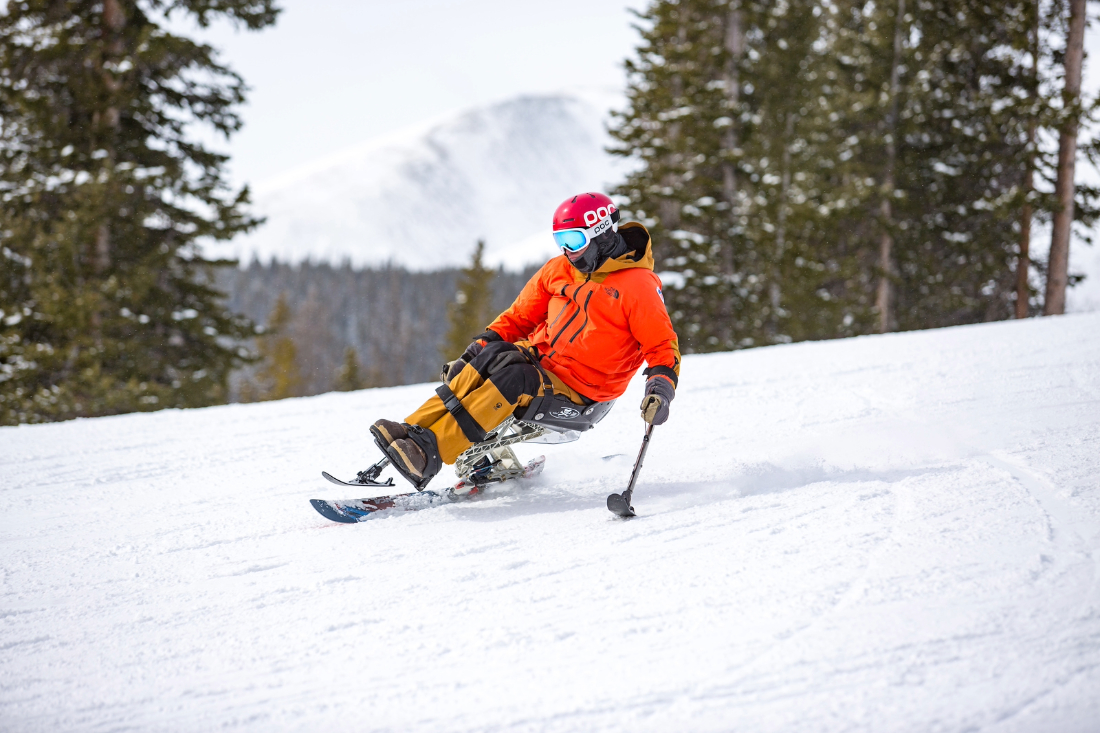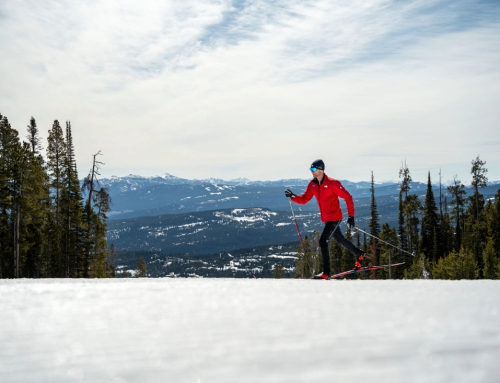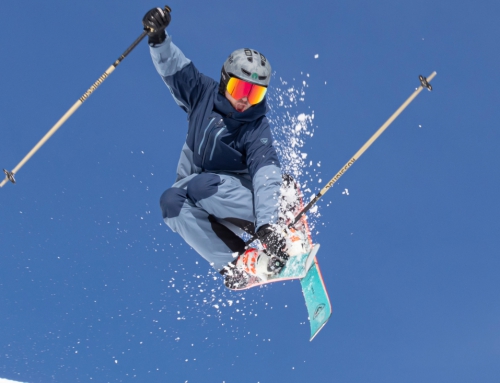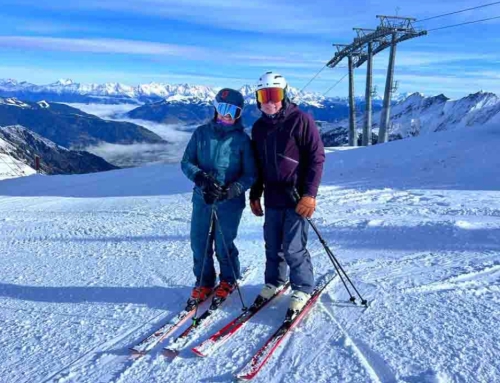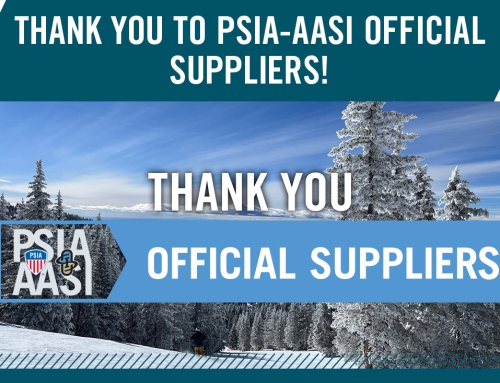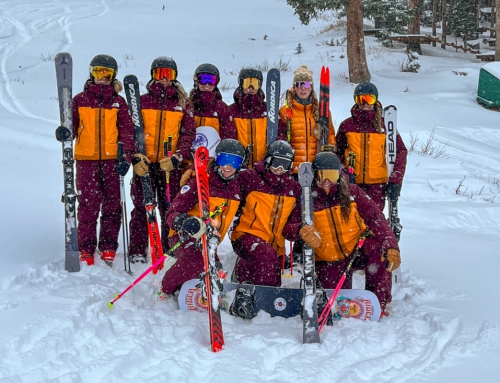How to Store Adaptive Snowsports Gear for Summer
Ready to put your skis, snowboards, and boots away for the offseason? In this “How to Store Your Snowsports Gear for the Summer” series, members of the 2024-28 PSIA-AASI National Team share their pro tips.
Here, the PSIA-AASI Adaptive Team kicks it off, with Geoff Krill, Melodie Buell, and Ryan Latham offering their advice. (Pro Tip: Bookmark or print this content for annual use and see below for specific offseason wax recommendations from PSIA-AASI Official Supplier Toko).
“Storing and maintaining adaptive ski and ride equipment for the offseason does not differ from good standard sliding tool maintenance when it comes to bases, edges, and turning down DIN settings on bindings,” says Krill. [This advice is ONLY for experienced skiers who understand what DIN is and have experience adjusting the retention on their bindings. If you don’t know how, don’t do it. It’s always good to ask the gear professionals at your local shop to check your binding settings, especially before beginning the new season].
What follows are some additional things to consider and pay attention to, according to Krill, Buell, and Latham.
Preparing Your Skis, Boards, Boots, and Bindings for Storage
Krill says he always makes sure that skis and boards are put away edged and tuned the way he likes them because you never know when the opportunity will come up for an endless winter or late/early season camp. Bases should be stone ground if needed and a thicker summer layer applied. He usually uses red (mid-temperature) wax as it tends to be the best all-around temperature wax when he returns to the slopes.
Ian Harvey, head tech of Toko, agrees with Krill, adding that Base Performance Red is Toko’s recommendation for summer storage wax. It’s a mid-range wax that’s the perfect hardness for storage waxing. He adds that if wax is too soft, it gets eaten up over the summer. If it’s too hard, the wax doesn’t seal the air and dust out very well. The Red is just viscous enough and just hard enough to be a perfect storage wax.
Krill also throws a late season tune and wax party in his garage to make sure all his friends and family have their quivers of skis and boards ready to go for the next sliding opportunity. He points out that many hands make light work and the time flies by once you get an effective assembly line in place. One of the best feelings in the world is pulling the equipment off the wall each fall and being ready to go with just a quick scrape and buff.
Buell adds that after summer skiing her skis and bindings usually need to be hosed down to get the visible dirt out of the bindings and off her skis. She then cleans up the edges, bases, and tends to important repairs. Finally, she waxes, warm scrapes to clean the rest of the dirt out, brushes them out with a roto-brush, and waxes them again.
She then turns down the DIN on her bindings, straps them up, and stores them. She also makes sure her ski boots are completely dry, buckles them up to maintain shape, and stores them in her bootbag, zipped up and in a mostly climate-controlled environment.
In addition, she drains her Therm-ic boot heater batteries and places them in a small utility bag with the charging cable, in the bag with her boots. She then sets a calendar reminder for the fall to charge and test them.
Finally, she pulls out her tool bag and tethers, dries them out, daisy chains them up, and puts them back in a bag.
Sit-Ski Related Maintenance of Equipment
Krill says that he puts his sit-ski through continual pre-ski checks throughout the season by constantly inspecting bolts, straps, and bindings. When it comes to the offseason, he removes his shock from the ski and sends it for service, during which seals, fluids, etc. are changed and replaced as needed. This can usually be done through the manufacturer or a reputable snowmobile or motocross shop that is familiar with high-end suspension maintenance. He says that it’s not worth missing a portion of the season due to a blown shock and damaging your suspension linkage.
He adds that sit-skis put a tremendous amount of force on bindings, and they should be checked for excessive wear on the heel piece and rails that hold it into place. You should look for any excessive movement or wiggle and/or cracks that may have formed, which would signal that it might be time to retire the binding. You should also make sure that all binding and plate screws are tightened, as they may have started to work themselves loose over the season.
Finally, he says that you should check outriggers for broken flip springs and replace pull strings if they are worn or excessively frayed. He also adds silicone spray to the release pins to prevent unwanted freezing during the winter season. Krill’s goal is to always end the season ready to start the next, and says that, “Taking care of adaptive equipment may force you into an uncomfortable role of mechanic and wield a wrench from time to time, but the peace of mind in trusting and knowing your equipment is invaluable.”
Regarding sit-ski equipment, Latham agrees with Krill on checking for parts that may have broken during the season. The offseason is a great time to replace those parts and grease the pivot. You can also check communication devices, such as two-way radios for VI (visual impairment) lessons, and remove batteries in those devises and store them inside. Finally, Latham puts his Carv devices on sleep mode for the summer.

